Today, the uneven coloring of walls and ceilings is gaining great popularity, in which several colors are used or a pattern, texture is added. It is not difficult to achieve a stylish design - just use the techniques of textured painting or apply ready-made design developments (special rollers). This method of processing the walls and ceiling allows you to bring a new breath to the interior, emphasize the non-standard features of residents, as well as save.
- DIY benefits of textured finish
- Preliminary procedures
- Stages of painting with relief paint
- Types of textured compositions
- Texturing Methods
- DIY embossed pattern
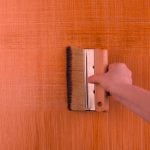
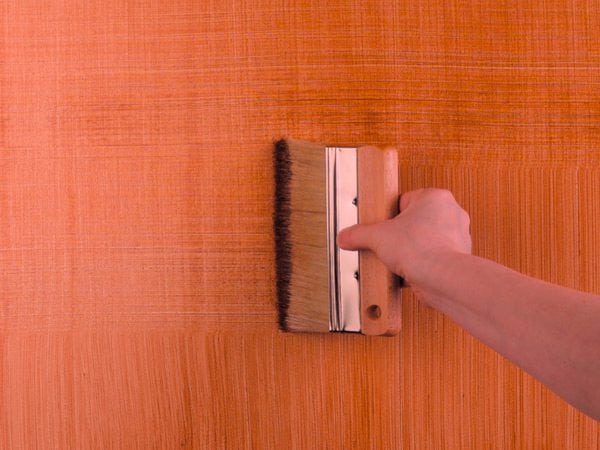
DIY benefits of textured finish
In wall decoration, two varieties can be distinguished - this is the use of special textured paint or the appeal to finishing techniques. In the first case, you should go to a hardware store and buy a special paint containing acrylic and other components. It does not lie uniformly on the surface and the effect of granulation is obtained. Textured paint for walls and ceilings has several advantages:
- reliably blocks and camouflages irregularities;
- you can paint the wall with your own hands, since the composition is easy to go to bed;
- non-combustible mixture, coloring prevents the development of mold;
- environmentally friendly;
- not afraid of mechanical stress.
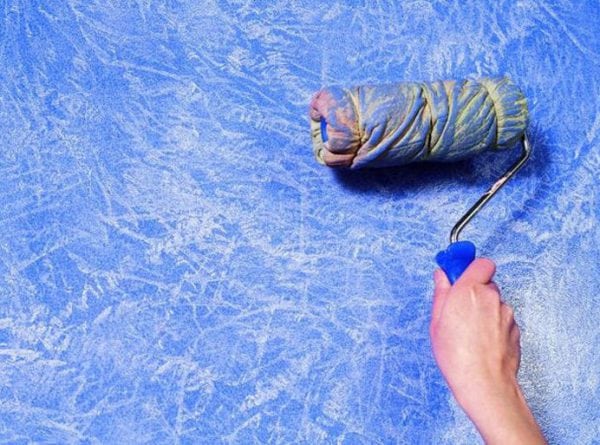
The second type of decor is when the painting is carried out with a conventional water-based composition using stencils or special application methods. The advantages of this method are:
- low cost of work;
- greater color diversity;
- the use of two-part rollers for applying a pattern;
- convenience and the ability to do it yourself.
Preliminary procedures
Before any decorative work, the wall or ceiling must be cleaned of old wallpaper and dust. If there are cracks, then they are sealed with putty. Alignment is an important preparatory step, since in this way structural paint will look more aesthetically pleasing and last longer. The primer completes the procedure, which neutralizes the excess moisture of the wall and helps the patterns look brighter.
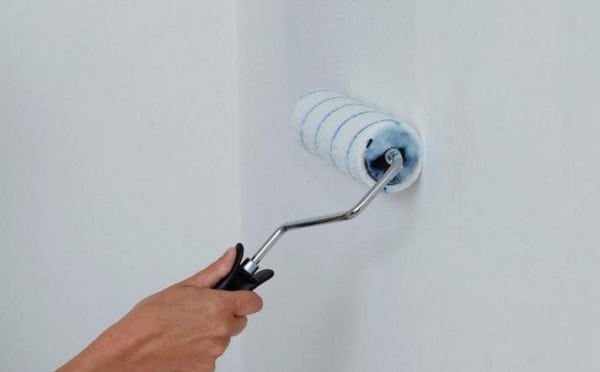
The next step will be to bring the aqueous emulsion paint, which has a thick composition, to a more convenient form for work. It is diluted with water and mixed. It’s easier to do this with a whisk for a drill. Textured paint should also be diluted, while adding filler. In both cases, color is mixed with the composition to give color.
to contents ↑Stages of painting with relief paint
A big plus of structural paints is that they themselves are not uniform in composition, and after additional manipulations you can achieve a grainy, wavy surface and more complex options, similar to marble patterns and “baked” paint. The process is quite simple:
- using a spatula, a mass is applied to the treated wall surface, distributing and ensuring that the layer is not too thick, but not thin;
- you can apply water-based paint with a roller or brush, then the effect will be different;
- to add additional texture, use a staple, a hard sponge or other tool;
- the wall will dry out for about two hours, but finally the water-based or textured paint will dry in a day;
- the surface is fixed with varnish, wax or acrylic.
Types of textured compositions
As options for structural paint, you can buy mixtures that give the walls a unique design:
- Relief - obtained by adding quartz chips, sawdust or other granules to the paint.
- Atacama is an option when a velvet surface forms on the wall with uneven coloring. The composition includes metal particles and quartz sand, which have reflective properties.
- Marseille wax is an imitation of stone, obtained by applying wax paint on top.
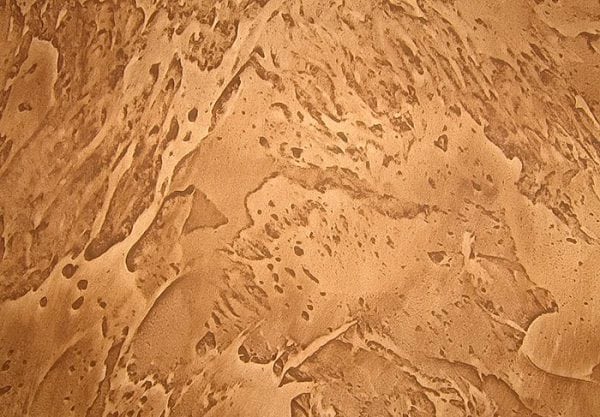
Texturing Methods
When working with enamel or water-based paint, the technology changes in that it is necessary to apply a thin layer. Let us single out the methods of wall decoration:
- Stencils. The simplest method is to first draw a pattern on thin plastic, oilcloth, linoleum, cut blanks, and then fix stencil on the wall and apply a water-based paint. This is a quick way, especially if you use purchased samples.
- Spraying. After the wall has been painted evenly in one layer, a second color is sprayed on top by spraying the water-based paint with a brush or brush.
- Using a homemade roller. Initially, a roller is made with their own hands, for which they take a normal construction one, foam pieces are attached to it or glued to it, and the fabric is tied. After that, a water-emulsion coloring material is applied to the wall or ceiling with such a roller. This allows you to achieve the spotting effect.
- The use of a roller for double staining. The stores sell double rollers fixed to each other. The main color is applied on one, and on the second there are convex patterns printed on the wall or ceiling. It is necessary to pass with such an instrument vertically so as not to disrupt the pattern sequence.
to contents ↑
DIY embossed pattern
The meaning of the technology is to scratch the pattern with your own hands using available means.
First, the wall (or ceiling, if the interior is in the style of natural stone) is painted in the traditional way. After that, a spatula (ordinary or serrated) is taken, with the help of which patterns are created, conducting them vertically or horizontally, in a circle, making waves and so on.
Such methods include the use of a hard brush, comb, sponge, which are passed through an unsurpassed layer, getting peculiar paths, scratching. Also suitable is the method of “blotting” a wall or ceiling with crumpled paper or applying and tearing off cellophane. If you use a brush and apply it repeatedly, then you get the aging effect.
In order to create an unusual interior with your own hands, it is enough to turn your wit and find at home all kinds of improvised means with which you can easily make a textured painting, and maybe discover a designer vein.




